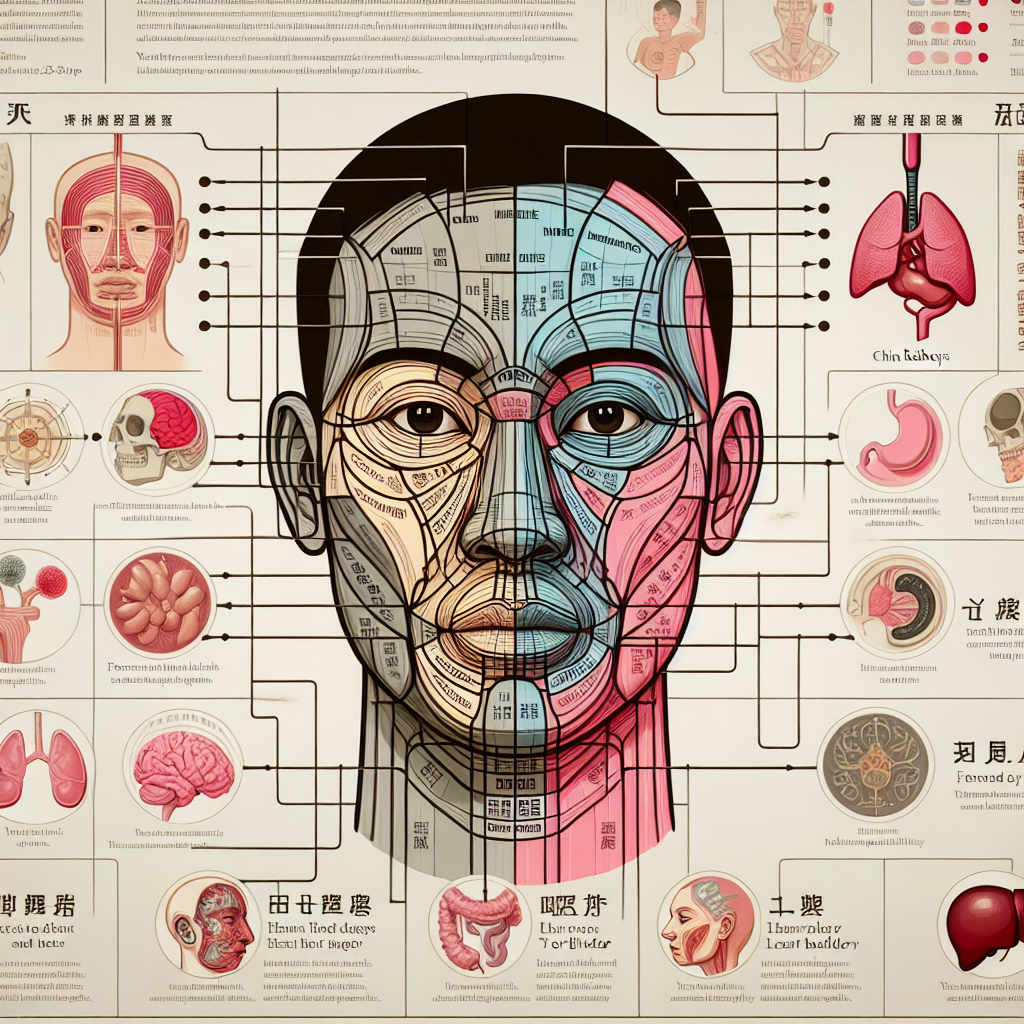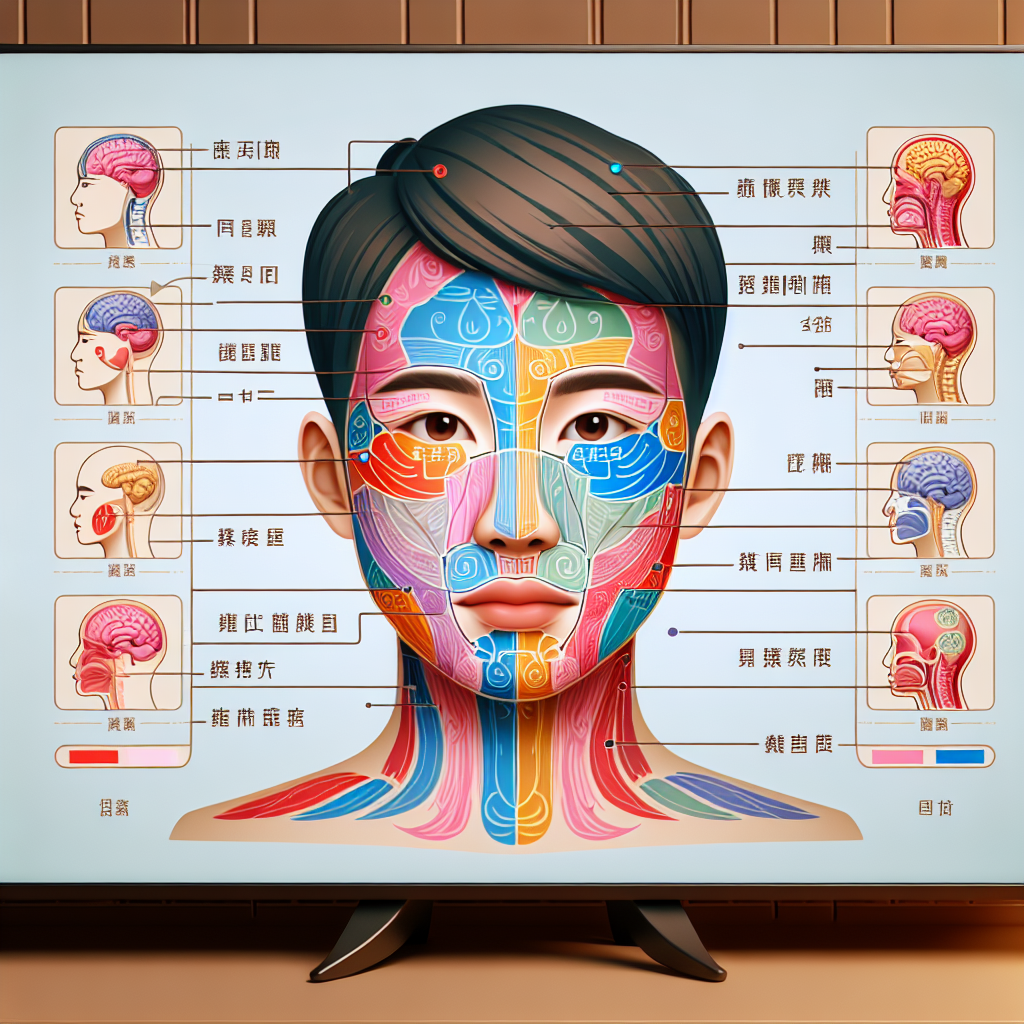Chinese Face Mapping: What Your Skin Says About Your Organs

Discover the ancient wisdom of Chinese Face Mapping and learn what your skin says about your organs. Uncover the secrets of your body’s internal health through your skin’s condition. Visit My Vibrant Vitality now to start your journey towards understanding and improving your health.
Understanding Chinese Face Mapping: How Your Skin Reflects Your Organ Health
Chinese Face Mapping, also known as Mien Shiang, is an ancient practice that has been used for centuries in Traditional Chinese Medicine (TCM) to diagnose and treat health issues. This holistic approach to health and wellness is based on the belief that different areas of the face correspond to specific internal organs. By examining the skin’s condition, practitioners can gain insights into the individual’s overall health and well-being.
The concept of Chinese Face Mapping is rooted in the principle that the body is interconnected. The skin, being the largest organ, is seen as a mirror reflecting the state of our internal organs. For instance, breakouts, redness, or changes in skin tone in certain facial areas may indicate an imbalance or dysfunction in the corresponding organ.
The face is divided into several zones in Chinese Face Mapping. The forehead, for example, is believed to be linked to the digestive system, particularly the bladder and intestines. Therefore, issues such as constipation or poor digestion may manifest as acne or blemishes on the forehead. Similarly, the cheeks are associated with the lungs and respiratory system. Skin issues in this area could indicate respiratory problems or allergies.
The nose, according to Chinese Face Mapping, is connected to the heart. Redness, swelling, or other skin issues on the nose could be a sign of high blood pressure or other heart-related conditions. The chin and jawline are linked to the hormonal system and kidneys. Breakouts in these areas, especially in women, often occur during menstrual cycles or when there is a hormonal imbalance.
While Chinese Face Mapping provides a fascinating perspective on health and wellness, it’s important to remember that it’s not a definitive diagnostic tool. It’s a complementary approach that can provide valuable insights into one’s health, but it should not replace regular medical checkups or professional medical advice.
Moreover, many factors can contribute to skin issues, including diet, stress, lack of sleep, and skincare products. Therefore, it’s essential to consider these factors when interpreting the signs on your face. For instance, if you’re experiencing breakouts on your forehead, it might not necessarily mean you have a digestive issue. It could be due to stress or a diet high in processed foods.
Despite these considerations, Chinese Face Mapping can be a useful tool in maintaining overall health and wellness. It encourages individuals to pay closer attention to their bodies and to be more proactive in their health. By understanding the potential links between the skin and the organs, individuals can make more informed decisions about their lifestyle and health care.
In conclusion, Chinese Face Mapping is a unique and holistic approach to health that emphasizes the interconnectedness of the body. While it should not replace professional medical advice, it can provide valuable insights into one’s health and wellness. By paying attention to the signs on our skin, we can gain a better understanding of our internal health and take proactive steps towards maintaining a balanced and healthy lifestyle.
The Ancient Art of Chinese Face Mapping: What Your Skin Reveals About Your Internal Organs

Chinese face mapping, also known as Mien Shiang, is an ancient practice that has been used for centuries in China as a diagnostic tool. This fascinating technique is based on the belief that different areas of the face correspond to specific internal organs. By examining the skin’s condition, practitioners can gain insights into a person’s overall health and well-being.
The concept of Chinese face mapping is rooted in traditional Chinese medicine, which views the body as a holistic system where everything is interconnected. The face, in this context, is seen as a mirror that reflects the state of the internal organs. For instance, blemishes, discoloration, or changes in skin texture in certain facial zones may indicate an imbalance or dysfunction in the corresponding organ.
The face is typically divided into several zones in Chinese face mapping. The forehead, for example, is believed to be linked to the digestive system, particularly the bladder and intestines. Therefore, issues such as constipation or poor digestion may manifest as acne or other skin problems in this area. Similarly, the cheeks are associated with the lungs and respiratory system. Skin issues here could suggest respiratory problems or allergies.
The nose, according to Chinese face mapping, is connected to the heart. Redness, swelling, or other noticeable changes in this area might indicate high blood pressure or other heart-related issues. The chin and jawline are linked to the hormonal system and kidneys. Breakouts or discoloration in these areas could be a sign of hormonal imbalance or kidney dysfunction.
While Chinese face mapping provides intriguing insights into our health, it’s important to remember that it’s not a definitive diagnostic tool. It’s a complementary approach that can help us become more aware of our bodies and any potential health issues. If you notice persistent skin problems in a specific facial zone, it’s advisable to consult with a healthcare professional for a thorough check-up.
Moreover, lifestyle factors can also significantly impact our skin’s condition. Poor diet, lack of sleep, stress, and environmental pollutants can all contribute to skin issues. Therefore, maintaining a balanced diet, getting adequate sleep, managing stress, and taking care of our skin are all crucial for our overall health and well-being.
Chinese face mapping is a fascinating practice that encourages us to view our bodies as interconnected systems. By paying attention to our skin, we can gain valuable insights into our internal health. However, it’s essential to remember that this practice should be used as a guide rather than a definitive diagnostic tool. Always consult with a healthcare professional if you have any health concerns.
In conclusion, the ancient art of Chinese face mapping offers a unique perspective on health and wellness. It reminds us that our bodies are complex, interconnected systems, and that our skin, the body’s largest organ, can serve as a valuable indicator of our overall health. By understanding the principles of Chinese face mapping, we can become more attuned to our bodies and take proactive steps towards maintaining good health.
Decoding Your Skin Problems Through Chinese Face Mapping: A Guide to Organ Health
Chinese Face Mapping, also known as Mien Shiang, is an ancient practice that has been used for centuries in China to diagnose diseases. This technique is based on the belief that different areas of the face correspond to specific internal organs. Therefore, any changes or problems on the surface of the skin can be indicative of an underlying health issue.
The concept of Chinese Face Mapping is rooted in the principles of Traditional Chinese Medicine (TCM), which views the body as a holistic entity where all parts are interconnected. According to TCM, the body’s vital energy, or Qi, flows through pathways known as meridians. When this flow is disrupted due to illness or stress, it can manifest as skin problems in the corresponding facial area.
For instance, the forehead is linked to the digestive system, particularly the gallbladder and liver. Therefore, breakouts or discoloration in this area could suggest an imbalance in these organs, possibly due to a high-fat diet or excessive alcohol consumption. Similarly, the cheeks are associated with the lungs and respiratory system. Skin issues here, such as rosacea or acne, could indicate respiratory problems or allergies.
The nose is believed to be connected to the heart. Redness, swelling, or excessive oiliness in this area could be a sign of high blood pressure or other cardiovascular issues. The mouth and chin area, on the other hand, are linked to the hormonal system and intestines. Breakouts or discoloration here could suggest hormonal imbalances or digestive issues.
While Chinese Face Mapping provides a fascinating insight into our internal health, it’s important to remember that it’s not a definitive diagnostic tool. It should be used as a guide to understanding potential health issues and should not replace professional medical advice. If you notice persistent skin issues, it’s always best to consult with a healthcare professional.
Moreover, external factors such as environmental pollutants, stress, and skincare products can also affect the skin’s appearance. Therefore, it’s essential to maintain a healthy lifestyle and skincare routine. This includes eating a balanced diet, staying hydrated, getting regular exercise, and using skincare products suitable for your skin type.
In conclusion, Chinese Face Mapping offers a unique perspective on health and wellness. By understanding the connections between our facial skin and internal organs, we can be more attuned to our bodies and take proactive steps towards better health. However, it’s crucial to approach this practice with a balanced perspective, recognizing its limitations and the influence of other external factors on our skin’s health.
While the practice of Chinese Face Mapping may seem foreign or even mystical to some, it is a testament to the wisdom of ancient Chinese medicine. It encourages us to view our bodies as integrated systems, where a change in one area can impact the whole. This holistic approach to health is increasingly relevant in our modern world, where stress and lifestyle factors often disrupt our body’s natural balance. By paying attention to our skin, we can gain valuable insights into our overall health and well-being.